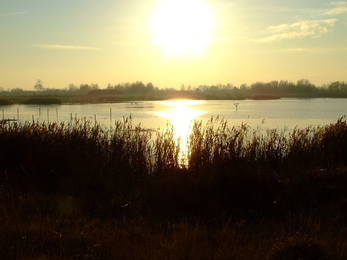Reserves
Rain, rain rain – the weather continues to be a challenge, with some of our sites, such as Abington, only becoming dry enough to graze in July and scheduling hay cuts becoming a real headache, although progress was being make by the end of July.
Lambing - Spring saw 146 lambs born at Lilbourne and 165 lambs at Barford, shearing is now well underway. We’ve had one calf born so far this year with another 4 due in August.
Summer Leys - following the reprofiling of the scrape last September, which was designed to create nesting and feeding areas, it has been a bumper year for breeding waders at Summer Leys. Little Ringed Plover, Redshank, Lapwing and Oystercatcher have all bred where the work was undertaken and in their highest numbers in recent years. Management of trees that are used as lookout perches by avian predators has also helped to reduce the levels of predation, with more chicks surviving to fledging.
Lilbourne also saw good numbers of waders this year including Lapwing, Oystercatcher, Little Ringed Plover, Curlew, Greenshank, Wood Sandpiper and Black-tailed Godwit, as well as some rarities, a lot of birders came to try and see a Red-necked Phalarope! Contractors have started work on the bund again as the Reserve edges towards a public opening.
Nene Wetlands has seen grazing introduced to the areas of ponds and scrublands known as ‘Irthlingborough Wild Corner’, whilst the team have been working with visitors and the local community to spread the message of the importance of keeping dogs on leads at the reserve.






